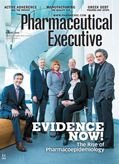Hurdles Ahead for 'Cures' Legislation, PDUFA Renewal
Pharmaceutical Executive
FDA reform may get tangled up in user fee negotiations, budget debate
Despite overwhelming House approval last month of the “21st Century Cures” Act, bipartisan support may fall apart in the coming months as key provisions face opposition in the Senate, negotiations begin on reauthorizing FDA drug user fees, and the presidential campaign shifts the debate to broader health issues. Congressional action on the Cures bill moved forward in July after the
Jill Wechsler

Supreme Court decision in favor of the Affordable Care Act, ending the prospect of endless health reform debate. But the House legislation still almost faltered due to opposition from consumer advocates claiming it would bring more unsafe drugs to market, and from fiscal conservatives about boosting mandatory spending. But House Energy & Commerce Committee chairman Fred Upton (R-Mich) orchestrated a 344-77 vote in favor of the measure by providing funds for the National Institutes of Health (NIH), while Democrats led by Rep. Diana DeGette (D-Col) helped sideline the FDA critics.
Upton and his allies also garnered support from hundreds of patient groups, research organizations, medical societies and biopharma companies. They applauded provisions to more fully incorporate patient experiences in considering a drug’s benefits and risks, expedite new drug approvals through biomarker qualification, streamline clinical trials, leeway for sponsors to utilize data from clinical experience, and added incentives for developing antibiotics and treatments for rare diseases.
The House measure now faces an overhaul in the Senate, where there’s talk of developing a very different, narrower bill by September; at a minimum it will drop provisions related to health information systems and Medicare and Medicaid reforms, which fall outside the purview of the Senate Health, Education, Labor & Pensions (HELP) Committee. Some Senate Republicans will strongly oppose the mandatory funding increase for NIH and the sale of strategic petroleum reserves to offset the cost, eroding Democratic support for the measure. If the Senate does enact a bill, it would face difficult conference committee negotiations with the House, and the process could extend well into next year.
In addition, Congress faces its usual impasse over the federal budget for fiscal year 2016. Democrats have blocked an increase in defense spending without similar gains for discretionary government programs, including healthcare and transportation infrastructure. Congress also will absorbed in coming months by debate over the Iran nuclear arms pact and major trade agreements.
On to PDUFA
Many of the main elements of the Cures legislation may end up in a broad FDA bill to reauthorize user fees for drugs, generics, medical devices, and biosimilars by summer 2017. FDA launched the PDUFA VI negotiating process with a public meeting July 15; monthly discussions with industry begin this fall, along with regular meetings for FDA to hear the views of patient, consumer, and health professional representatives.
However, there’s pressure on all sides to craft a leaner legislative package because the user fee reauthorization process, for the first time, coincides with a presidential election campaign. A new administration and a new Congress in January 2017 means that any user fee agreement and authorizing legislation will have to be ready for lengthy reviews by both outgoing and incoming administration officials.
Speedy negotiations won’t be easy, though, as seen in the range of issues raised at last month’s PDUFA opening session. The importance of the process to FDA was apparent in appearances by acting commissioner Stephen Ostroff, who likened efforts to accelerate new drug discovery to the remarkable Pluto fly-by; by deputy commissioner Robert Califf; and by Center for Drug Evaluation and Research (CDER) director Janet Woodcock. She highlighted the importance of patient input in drug development and review, interest in expanding FDA’s Sentinel program to strengthen oversight of postmarketing safety, and further efforts to bolster regulatory science. CDER “continues to struggle” with the recruitment and retention of critical staff, Woodcock observed, reflecting numerous comments that FDA’s ability to attract top scientists is key to achieving a more predictable and efficient drug development and approval program.
Patient groups and professional organizations offered a range of initiatives meriting PDUFA support: validation of more biomarkers and patient reported outcomes (PROs), pediatric and neonatal drug development, expanded use of

registries, data transparency initiatives, and greater consistency across CDER review divisions on acceptance of expedited review pathways. Several commentators urged further assessment of the 60-day waiting period, established under PDUFA V, to ensure that new drug applications are complete before starting the review clock, and whether it has accelerated or slowed application review times.
A main theme was expanding the use of “real-world” evidence to accelerate drug development. Greg Daniel of the Brookings Institution described how PDUFA VI should shift from a focus on streamlining application review, to strategies for tapping clinical evidence and other data to support agency decisions and to document product safety in the postmarket setting. Allan Coukell of the Pew Charitable Trusts similarly emphasized the value of better access to observational data from health claims data bases, in addition to clinical trials. And Marc Boutin of the National Health Council highlighted the need to clarify that sponsors engaging with patients early in the development of new experimental uses of a therapy does not constitute off-label promotion.
Kay Holcombe of the Biotechnology Industry Organization (BIO) emphasized the goal of further integrating patient perspectives into drug development and regulatory decision-making by shifting from an anecdotal to a data-driven, systematic process built on a structured benefit-risk framework and clear FDA guidance. Sponsors also seek improvements in FDA communication and practices across CDER review divisions: a BIO survey finds that half its members report very beneficial and productive interactions with FDA, but half see “room for improvement.”
FDA officials emphasized that the user fee program deals only with agency processes to achieve a more predictable, efficient drug development and review process-and not policy issues that require legislative or regulatory action. Yet, proposals to expand the use of “real-world evidence” and other data sources may fall into the “policy” bucket.
And Holcombe raised a clear legislative issue: industry wants Congress to ensure “long-term stability” for PDUFA by clarifying that user fees are not subject to future budget sequestration actions-a development three years ago that delayed implementing then-new PDUFA V initiatives.
Jill Wechsler is Pharmaceutical Executive's Washington correspondent. She can be reached at jwechsler@advanstar.com

FDA Issues Refusal to File for ImmunityBio’s sBLA for Anktiva in BCG-Unresponsive NMIBC
May 6th 2025The Refusal to File letter comes despite the FDA’s prior encouragement to submit a supplemental biologics license application for Anktiva in patients with BCG-unresponsive non-muscle invasive bladder cancer with papillary disease.
Navigating Distrust: Pharma in the Age of Social Media
February 18th 2025Ian Baer, Founder and CEO of Sooth, discusses how the growing distrust in social media will impact industry marketing strategies and the relationships between pharmaceutical companies and the patients they aim to serve. He also explains dark social, how to combat misinformation, closing the trust gap, and more.